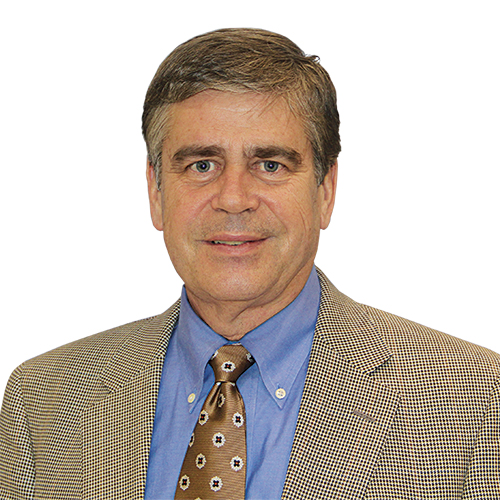One-upping about winter desiccation

Karl Danneberger
The “Four Yorkshiremen” is a classic comedy sketch associated with British comedy troupe Monty Python. It consists of four men at a resort discussing what it was like growing up poor. In the sketch, each one tries to one-up the others. As the conversation progresses, the stories become increasingly absurd. An early exchange in the sketch goes something like this:
Man 1: In them days, we’d a’ been glad to have the price of a cup of tea.
Man 2: A cup ‘a cold tea.
Man 3: Without milk or sugar.
Man 4: Or tea!
Man 1: In a filthy, cracked cup.
Man 2: We never had a cup. We had ‘a drink out of a rolled-up newspaper.
You get the idea.
I experience a similar situation with superintendents one-upping each other about winter desiccation. Winter desiccation is the death of turfgrass leaves or plants from winter drying. Desiccation occurs most often on open, semidormant turf exposed to windy, low-atmospheric-humidity conditions. The two major types of winter desiccation are atmospheric and soil drought.
Atmospheric drought normally is associated with leaf tissue death. Favorable conditions for this type of desiccation are sunny, windy conditions combined with low atmospheric humidity. The soil may have adequate moisture but is frozen or cold enough to increase the viscosity of the soil water to the point where uptake is severely restricted. Plants with restricted or shallow root systems — like Poa annua — are sensitive to atmospheric drought. Desiccation symptoms appear similar to drought in that leaves are brittle dry and have a burned look.
Given open turf, low humidity and breezy or windy conditions, temperature is a good predictor for desiccation. When air temperatures exceed average soil temperatures by more than 20 degrees F, conditions are favorable for desiccation.
Atmospheric drought is common through the Midwest and eastern U.S. Although atmospheric desiccation can cause leaf death, it’s not normally associated with crown or plant death. However, juvenile or succulent-growing turf is especially susceptible to desiccation and death. The injury sustained with atmospheric desiccation recovers once the plant begins growth in early spring.
The second type of desiccation occurs from lack of rain or snow under low-atmospheric-humidity conditions and progressively droughty soil conditions, sometimes resulting in plant death. In cool, arid regions like the western arid regions of the United States, this type of desiccation is common.
Returning to the Four Yorkshiremen, the atmospheric and soil winter desiccation that occurs through the northern Great Plains and western United States is the final one-up story in the desiccation discussion. It’s fascinating how superintendents manage greens in the region. Desiccation can be so severe that water trucks or irrigation pipe installed below the frost line sometimes supply water to greens. Contrast this to courses like those in Ohio, where we winterize irrigation systems by blowing water out of the system.
It takes talent to apply enough water to greens to reduce the severity of desiccation without applying too much water, especially in later winter with the potential for freeze injury.
We break down covers to protect greens from winter injury into two major categories — permeable and impermeable. Permeable covers allow for air, light and water to penetrate the cover. Permeable covers protect greens from wind and sun exposure.
Impermeable covers are resistant to air and water penetration. Impermeable covers are adapted to extreme cold and long-term winter conditions.
Superintendents often live in a bubble. Surrounded by colleagues in similar situations, they tend to think of their agronomic problems — like desiccation being the norm — locally. This winter, as you attend regional and national turfgrass conferences, seek out superintendents from around the country to get their perspectives on agronomic issues you face. You may find yourself — like the Four Yorkshiremen — discussing a topic with a broad viewpoint across a broad spectrum.
Karl Danneberger, Ph.D., Golfdom’s science editor and a professor at The Ohio State University, can be reached at danneberger.1@osu.edu.










